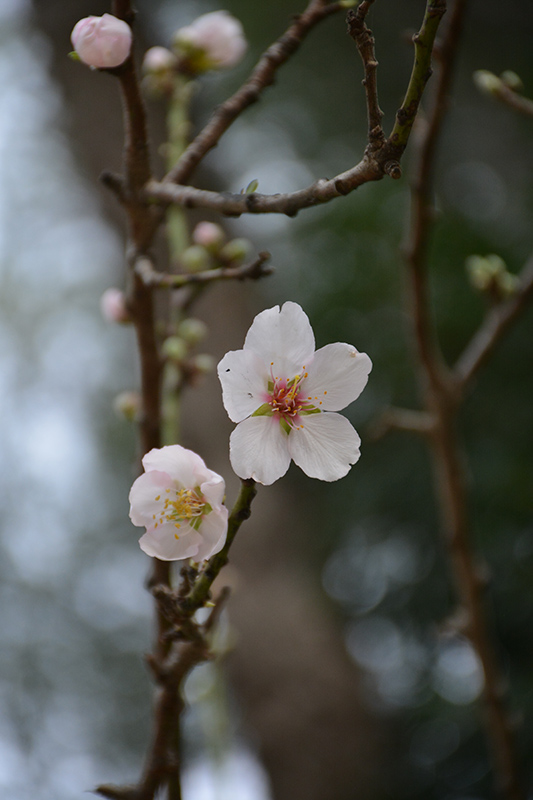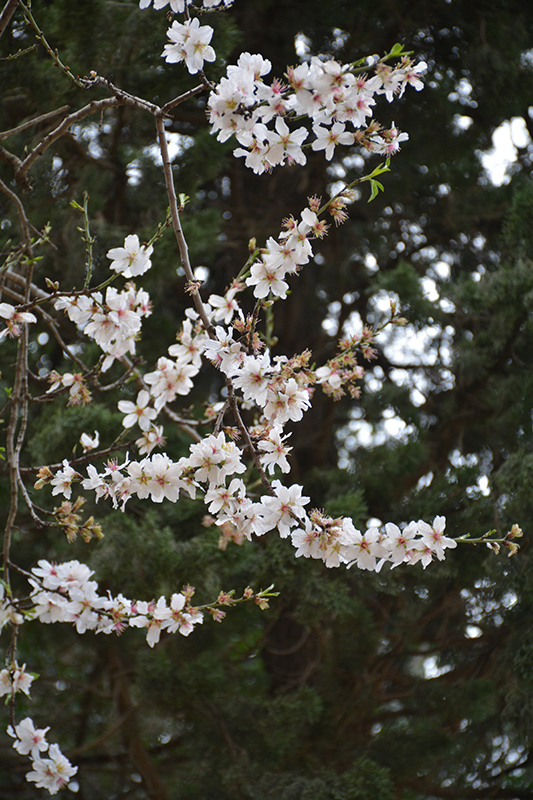Height: 15 feet Spread: 15 feet
Sunlight:
Hardiness Zone: 7a Description: An attractive fruit tree with showy pink to white flowers in late winter to spring followed by edible nuts that are widely used commercially; quite ornamental; needs full sun, well-drained soil and a pollinator; flowers can be damaged by spring frost Edible Qualities Almond is a small tree that is commonly grown for its edible qualities. It produces coppery-bronze oval seeds in soft shells with tan overtones and white flesh which are harvested from late summer to early fall. The seeds have a mild taste with a hard texture and a distinctive fragrance. The seeds are most often used in the following ways: Features & Attributes Almond features showy clusters of fragrant white flowers with scarlet eyes and pink anthers along the branches from late winter to early spring, which emerge from distinctive shell pink flower buds before the leaves. It has green deciduous foliage. The pointy leaves turn yellow and orange in fall. This is a deciduous tree with a more or less rounded form. Its average texture blends into the landscape, but can be balanced by one or two finer or coarser trees or shrubs for an effective composition. This plant will require occasional maintenance and upkeep, and is best pruned in late winter once the threat of extreme cold has passed. It is a good choice for attracting bees and butterflies to your yard. Gardeners should be aware of the following characteristic(s) that may warrant special consideration; Aside from its primary use as an edible, Almond is sutiable for the following landscape applications; Planting & Growing Almond will grow to be about 15 feet tall at maturity, with a spread of 15 feet. It has a low canopy with a typical clearance of 3 feet from the ground, and is suitable for planting under power lines. It grows at a medium rate, and under ideal conditions can be expected to live for 50 years or more. This variety requires a different selection of the same species growing nearby in order to set fruit. This tree is typically grown in a designated area of the yard because of its mature size and spread. It should only be grown in full sunlight. It does best in average to evenly moist conditions, but will not tolerate standing water. It is not particular as to soil pH, but grows best in sandy soils. It is somewhat tolerant of urban pollution, and will benefit from being planted in a relatively sheltered location. This species is not originally from North America.![]()
![]()
![]()
![]()
![]()
![]()
![]()
![]()
![]()
![]()
top of page
Louie's Nursery Menifee - Plant Finder
Characteristics
Applications
Features & Attributes
This tool is an online resource representing many of the varieties that we carry over the course of the season, and is intended for informational purposes only. Inventory varies seasonally, so we cannot guarantee that every plant will be in stock at all times - please contact the store directly for current availability. It does not include our entire selection of plants, so be sure to visit our store to see varieties that may not be represented on this list.
bottom of page

